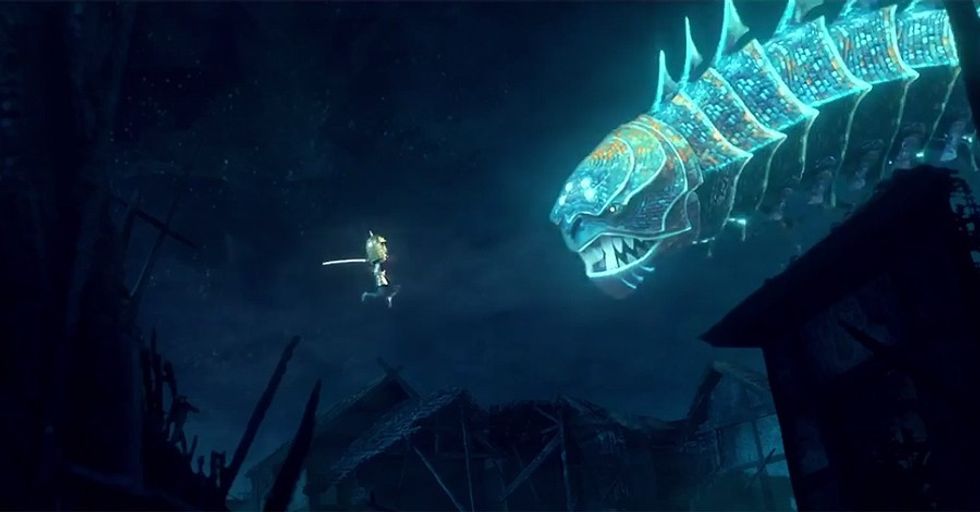HDR 101: 4 Things You Need to Know About High Dynamic Range
Technicolor senior colorist Mike Sowa discusses HDR, its impact on storytelling, and his collaborations with directors and cinematographers.

For filmmakers, it’s really important to understand the impact of all of the technology and tools at your disposal to create powerful, visually striking content. High Dynamic Range is an exciting new technology that opens up a whole new palette. Being limited in how you use color and light to tell your story can restrict you from realizing the fullest potential of your vision.
If you stay true to the photography, you can make a really pleasing image that makes SDR look almost embarrassing.
HDR, when managed by filmmakers (and especially cinematographers), allows the viewer to experience more immersive and vivid colors, much richer contrast, deeper shadows, and brighter highlights. Here's what you need to know.
1. What is HDR?
HDR is a viewing format that displays contrast, color, and luminance capable of producing an overall highlight brightness level of 1000 NITs (and more if so desired). SDR is 100 NITS. So HDR can be 10 times brighter with more dynamic range of the original image.
Of course, it's not to say that that level of luminance is always desirable. Cinematographers and directors are the best judge of HDR luminance based on their creative intent. Suffice to say, every filmmaker I’ve worked with so far goes crazy for HDR because suddenly their images are clearer, crisper, and feel more immersive.
2. How does HDR affect the viewer’s experience?
HDR creates a level of clarity as experienced in real life: brighter, clearer, sharper. It’s a more dynamic image, so it has more information in it. The image can be pushed into a place that’s hyper-reality, but if you stay true to the photography you can make a really pleasing image that makes SDR look almost embarrassing.
HDR creates a level of clarity as experienced in real life.
As a viewer, I love HDR images when they’re true to the photography. I’ve seen HDR be used as a marketing device where the highlights are just exploded. And the color and brightness are just an assault on the eyes. But when you are true to the artistry and make it look like the filmmakers intended this new environment, it looks awesome. What will be interesting is to see where the filmmakers take productions that know ahead of time that they are color finishing in HDR.
3. What is it like doing an HDR grade with a director and/or cinematographer?
When we start working, there’s such a "wow" factor it takes a moment to put that aside and start focusing on the story again. With HDR, we have a whole new set of circumstances that we have to address.
The first time I worked in HDR, I had a shot with clouds. In SDR, projected on a screen, the clouds were just kind of white. SDR was not capable of producing the contrast or the dynamic range to actually show you detailed information. In HDR, working with the same files, suddenly the skies were very clear; we had color from the setting sun in the background, different colors streaming through the clouds— some pinks and some oranges— and I compared that back to the SDR, which was just kind of a blob of whiteness, or something you couldn’t quite make out.

In HDR, suddenly there’s a whole new set of information for the eyes to look at. In that case, it was okay because the clouds weren’t essential to the story. But this opens up a whole new set of creative choices that need to be made. For example, if we have a window in a shot, now, because of HDR, we see too much detail through the window. So we can blur it, blow it out, or make it darker. It’s all about keeping the attention and focus on the actors and story, which are now that much crisper because of HDR.
Most of my non-industry friends have heard of HDR but confuse it with 4K.
It’s all about storytelling. And that involves directing the audience’s eye. This is a new playground we’re working in; more information in the image means more to work with.
4. How long will it take for the film community to achieve fluency in HDR?
HDR is definitely the shiny new toy everybody wants once they see it. Most consumers that will ultimately drive the format have not yet been made aware of the differences between SDR and HDR. Most of my non-industry friends have heard of HDR but confuse it with 4K. When I explain what HDR really is I find it hard to describe without making it sound like the display is just brighter.
Once the marketing of HDR finds the right way to appeal to the average viewer, we will see the demand for it take off. If the public simply sees a side-by-side demonstration with matching footage in SDR and HDR, they will believe there is value in the HDR. It is so beautiful and compelling, it sells itself.
Follow @TechnicolorCrea on Twitter for news about exciting new tools and technologies for filmmakers, as well as director, DP, colorist, and sound video interviews.
Top photo credit: Sasha64f / Shutterstock











